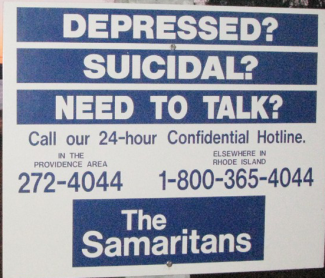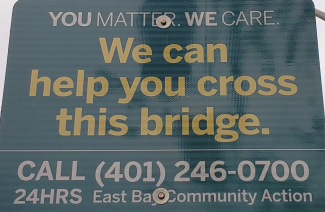Safety Strategies

People living with suicidal thoughts often feel hopeless and have difficulty asking for help. When this happens, being able to step back, pause, and put time and distance between someone and potentially dangerous objects is key to gaining perspective. Helping someone (maybe yourself) to create this necessary breathing room is essential. We call this lethal means safety. This short video helps explain lethal means safety.
Talking to someone about suicide is hard. Talking to them about reducing their access to things like their own medicines, firearms, a local bridge, or other potentially lethal methods can be even harder. Here are some tools that can help.
A conversation about lethal means safety may start with a general conversation about suicide. Here are resources about talking about suicide in general and about safety planning. These resources can be helpful as you prepare to talk with a family member, friend, client, or patient:
A #RealConvo Guide: A guide about how to respond when someone tells you they are considering suicide (American Foundation for Suicide Prevention)
Reach Out: How To Help Someone At Risk Of Suicide: An article and radio segment about how open up a conversation about suicide with someone you care about (National Public Radio).
The five action steps: Five steps to use for communicating with someone who may be suicidal (#BeThe1To).
Collaborating on Safety Plans: A video on how to collaborate with a person at risk of suicide in order to create their safety plan (Suicide Prevention Resource Center)
Firearm Safety Counseling: A video showing a lethal means safety conversation between a clincian and a client (Suicide and Trauma Reduction Initiative for Veterans)
Safety planning is a way of helping a person at risk of suicide create a plan to keep themselves safe during challenging times. You can create a safety plan for a family member, for a client or patient, or for yourself. Safety planning conversations can be hard, but they can save a life.
Lock To Live: This tool helps people thinking about suicide and their loved ones make decisions about reducing access to potentially dangerous objects in the home during a difficult time.
Start the Conversation: Safety Planning: A safety plan template that someone thinking about suicide can fill out with the help of a loved one, a trusted adviser, or a mental health professional.
Collaborate Safety Planning for Older Adults: A manual designed to be used by clinicians working with older veterans, but it is helpful for any older adult.
Getting a free gun lock in Rhode Island: Review the list of local law enforcement offices in Rhode Island where you may be able to pick up a free gun lock. (Project ChildSafe)
Medicine drop-off sites: See where you can drop off unwanted or expired medications in Rhode Island.
Free medicine lock bags: Use this form to request a free medication lock bag. This will help you lock up medicines in your home. Lock bags and boxes are also sold by major retailers.
Free gun locks at libraries: See what Rhode Island libraries distribute free gun locks.
Store your firearms: Learn where there are secure, out-of-home firearms storage facilities in Rhode Island.
Bridge safety in Rhode Island: Partner organizations and groups are working towards greater safety on Rhode Island’s bridges. You can see some of that work here:


Means Matter: Read all about the importance of lethal means safety on the Means Matter website from the Harvard T.H. Chan School of Public Health.
Reduce Access to Means of Suicide: Learn why lethal means safety is important, what you can do, and how you can take action on this webpage from the Suicide Prevention Resource Center.
Lethal Means and Suicide Prevention for Industry and Community Leaders: Read about lethal means safety in this report from the National Action Alliance for Suicide Prevention.
Lethal Means Safety & Suicide Prevention, Veterans Affairs: Read about Veteran-oriented lethal means safety on this page from the U.S. Department of Veterans Affairs.
Jed’s Impact: Watch this brief video about the importance of restricting access to lethal means on college campuses and elsewhere in order to prevent suicide from the JED Foundation.
Information for range owners or retailers: Here is useful information for concerned gun range owners or firearm retailers. You can download a brochure or bring a Talk Saves Lives firearms presentation to your range or establishment.
Over-The-Counter does not mean On-The-Counter campaign: Learn about the importance of locking up over-the-counter and prescription medications (also available in Spanish). Locking up medicines is part of “suicide proofing” your home.
Extreme Risk Protection Order laws (ERPO laws), like their name suggests, are for the rare but dangerous situations in which a person poses serious risk to themselves or others and needs to be temporarily kept from accessing firearms. States have different approaches to ERPO laws, also called “red flag laws,” so it’s important to know the laws in your state.
Rhode Island’s Extreme Risk Protection Order laws:
Here is a general overview of the ERPO law in Rhode Island. (Giffords Law Center)
This is a brief overview of the ERPO law in Rhode Island; the webpage has links to other states’ ERPO laws for comparison. (Johns Hopkins Bloomberg School of Public Health)
Here is an interview in which representatives from the Rhode Island Police Chiefs Association discuss Red Flag policy in Rhode Island. (WPRI-TV, 2018)
ERPO Laws in the United States:
Here is a fact sheet about the impact of ERPO laws in states that have them. (Everytown)
For Yourself

Whether you want to learn how to keep yourself safe during a hard time, a mental health or substance use crisis or would like more information about this topic, there are available resources that can reduce the risk of harm.
For a Family Member or Friend

If you are concerned that someone you care about is considering suicide, there are resources you can use to help them put time and space between themselves and things they can use to die by suicide.
For a Client or Patient

Clinicians have an opportunity to support a person in crisis if they can identify the crisis signs, work with the person to put time and space between themselves and lethal means, and get them the help they need.